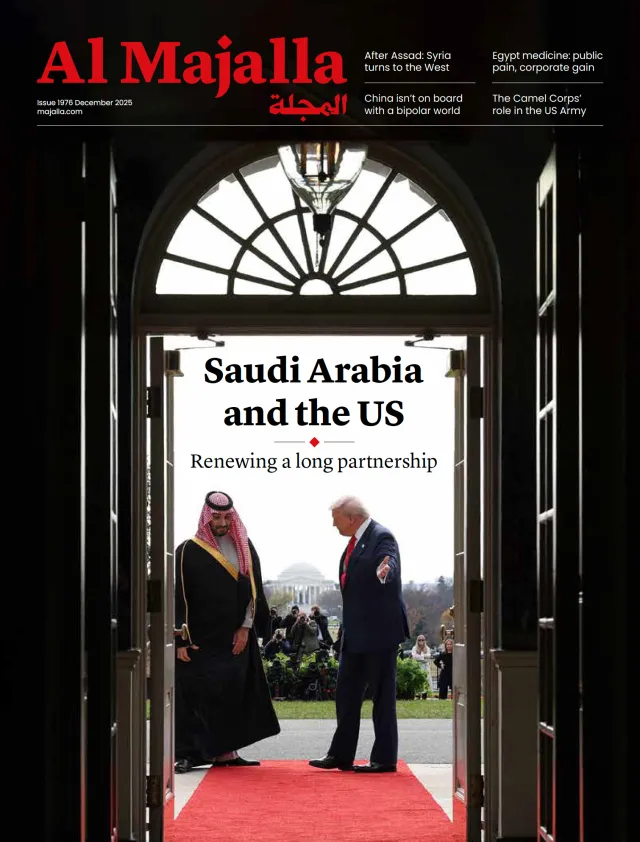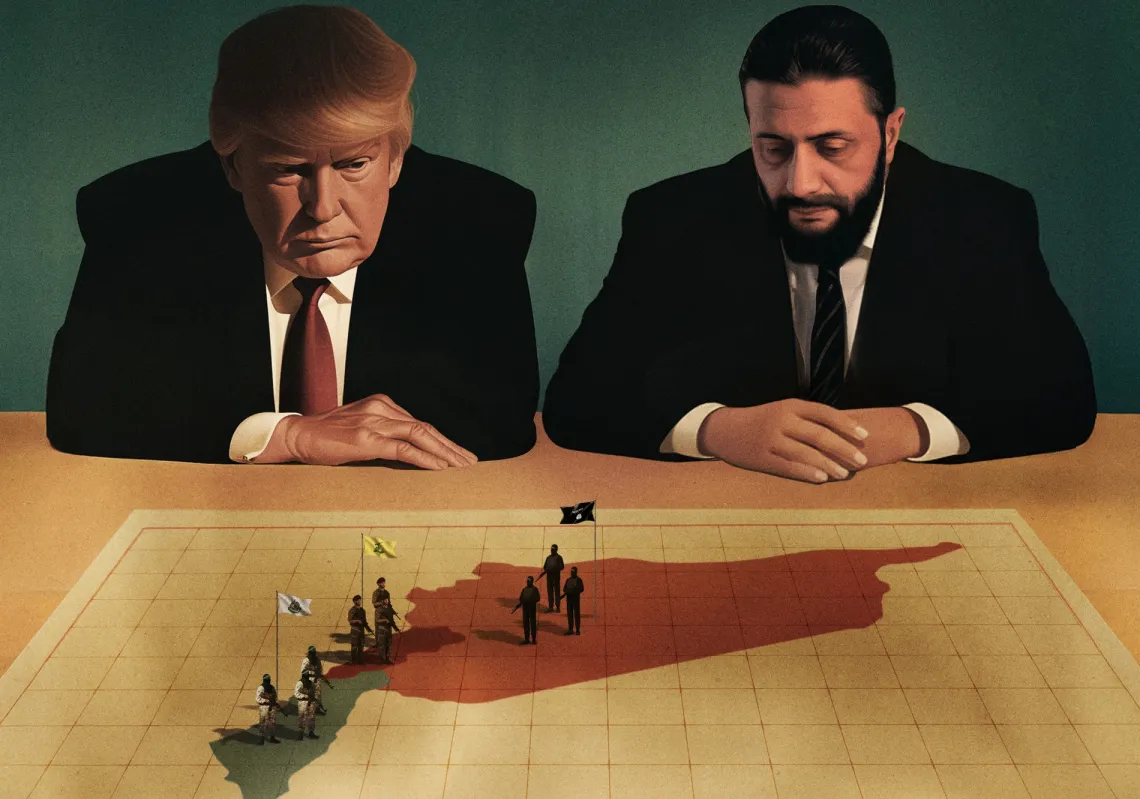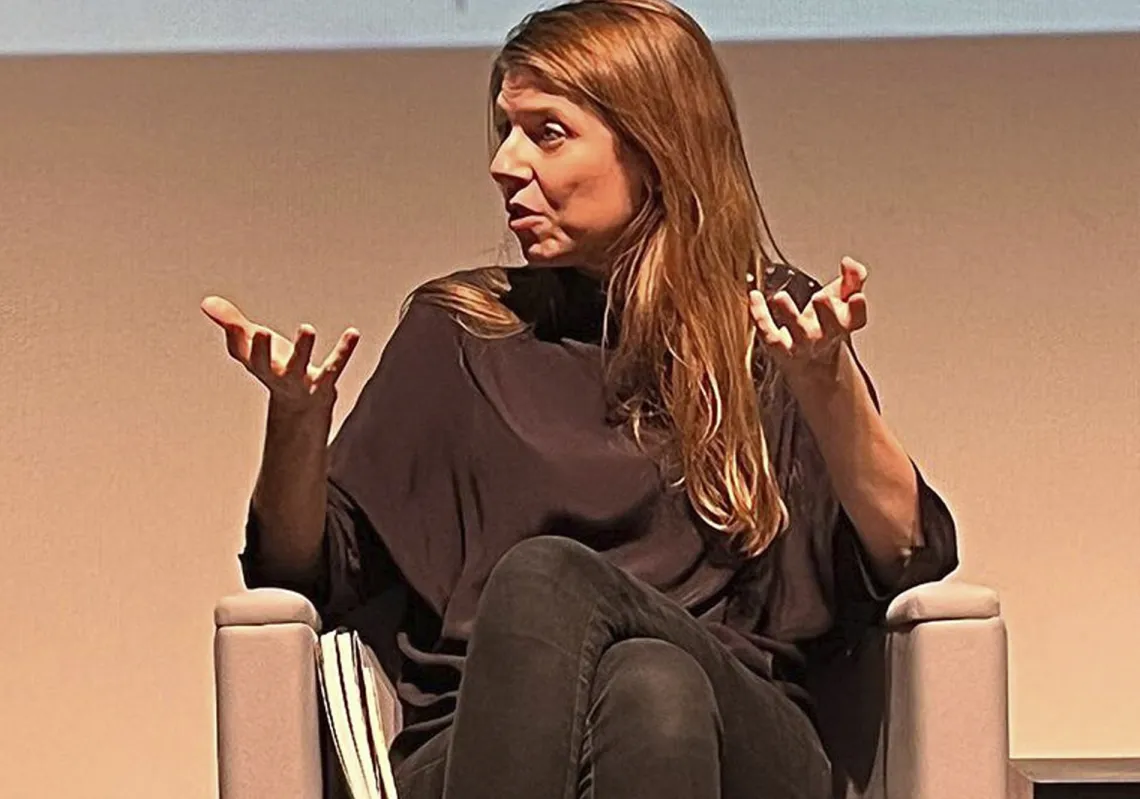This monthly feature offers an overview of what’s new on the big screen, spanning both mainstream and arthouse films across all genres while also revisiting titles from the archive of classic cinema.
Project X
Written by: Peter Mimi & Ahmed Hosny
Directed by: Peter Mimi
Production country: Egypt
Widely anticipated to be a box office hit, Project X is led by one of the most popular figures in contemporary Egyptian commercial cinema—Karim Abdel Aziz—and directed by Peter Mimi, his long-time creative partner.
Positioned as a high-budget production, the film aspires to deliver action sequences with a Hollywood level of craftsmanship, and has a similar structure to thrillers such as The Da Vinci Code—with a mystery rooted in a quasi-sacred location, its clues scattered across countries.
Films of this genre often prioritise suspense over character-depth or dramatic nuance, relying instead on breathless editing and fast-paced shifts through time and space. Yet in Project X, these typical strengths fall somewhat short.
The visual palette created by Peter Mimi, cinematographer Hussein Asr, and the lighting crew leans more toward aesthetic refinement than sheer visual dazzle, making the film pleasurable to watch primarily for its polished imagery.
The story follows Youssef El-Gamal (Karim Abdel Aziz), a man accused of killing his wife. Dismissed from his job, committed to a psychiatric hospital, he is punished for his quest for truth, which exposed the deceit of the group he once belonged to.
While political messages inevitably surface, the film’s dramatic shortcomings lie in the lack of clarity regarding Youssef’s mission and the precise function of those who assist him. In compensation is the film’s visual appeal, Amin Bouhafa’s evocative score, and standout performances in select cameo roles.
Peter Mimi is a sharp director who evolves with each project. In one telling scene, the protagonist smiles near the film’s conclusion, echoing the applause of theatregoers, showing Mimi’s intuitive cinematic flair. Like veteran director Sherif Arafa in his later films, Mimi might do well to leave the intricacies of screenwriting to specialists and dedicate his full attention to the demanding craft of direction.
Hurry Up Tomorrow
Written by: Reza Fahim, Trey Edward Shults, and The Weeknd
Directed by: Trey Edward Shults
Production country: United States
The title of this psychological thriller is borrowed from the name of the sixth (and most recent) album by Canadian singer and songwriter Abel Makkonen Tesfaye, known professionally as The Weeknd, which was released in January 2025.
The film Hurry Up Tomorrow, a companion piece to the album, stars Tesfaye as a fictionalised version of himself, in which he suffers from insomnia and depression. Director Trey Edward Shults gives it a bold, kinetic, cinematic style, with fluid tracking shots that circles a fan named Anima (Jenna Ortega) as she sets a house ablaze.
In parallel, we witness Abel being abandoned by his lover in dramatic circumstances, now teetering on the edge of losing his voice, in a prologue that carefully builds the film’s visual and emotional landscape.
Abel’s life plays between concerts, drug-fuelled highs, sleeplessness, nightmares, and a tense relationship with his manager and friend, Lee (Barry Keoghan), who urges him to continue touring and embrace success—even as he unravels.
Although the roots of his unhappiness run deeper and are hinted at, the screenplay is fixed on the present. The singer’s fragility is such that when Anima suddenly appears at one of his concerts, his world is thrown off balance. Sensitive, intuitive, and well-versed in his music, she resolves to help, yet her intervention leaves a trail of destruction.
The narrative remains deliberately ambivalent, affording Anima enough dimension to avoid being dismissed as unhinged—even though her actions suggest otherwise—as Hurry Up Tomorrow plunges into a dreamlike, nightmarish meditation.
Its only misstep is at the end. Its narrow focus on Abel’s ailments and narcissism suggests that the director may have been blinded by awe of the film’s celebrity star, at the expense of the expansive cinematic potential the film established.
Deaf President Now!
Directed by: Nyle DiMarco and Davis Guggenheim
Country of production: United States
Deaf President Now! is an Apple Original documentary that recounts a momentous week in the spring of 1988 at Gallaudet University—the world’s only institution of higher learning devoted exclusively to the deaf.
It recalls students’ protests against the appointment of a university president, Jane Spilman, who was neither deaf nor understood the language and culture of deafness. In fact, Spilman had demonstrated open disdain for the deaf community, arguing that they were incapable of adapting to the hearing world.
Her selection was not only a profound misjudgment but a direct affront to the identity and dignity of the university’s students, threatening to erode their confidence and sense of belonging.
The documentary interviews the student activists years later, as they recount their experiences during that transformative week. Their testimony keeps viewers immersed in a story shaped by resolve, insight, leadership, and humour.
These personal narratives offer a glimpse into a vibrant, intelligent, and deeply connected community—their histories, their early struggles, and the message they got, which was to assimilate into a hearing world that never truly embraced them.
Directors DiMarco and Guggenheim harness the full breadth of cinematic techniques, from moments of muted sound or accentuated silence to the capture of vibrations and frequencies and playful use of light and colour, all helping to replicate the sensory dimensions of deafness.
Expression comes through facial movements and sign language, with every gesture conveying the emotional weight and clarity of that pivotal moment. The result is a deeply human and aesthetically arresting documentary. Pacing is another of the film’s triumphs. Its rhythm mirrors the tempo of the community’s daily life and the urgent momentum of their uprising. “It wasn’t a protest; it was a revolution,” recalls one.
While some might initially question the need for a deaf president, the documentary deftly unpacks this rationale. The protest was not just opposition but a response to systemic exclusion, a fight against being rendered invisible. For its students, Gallaudet was more than a university; it was a sanctuary, identity, and defiance rolled into one. There could be no return to silence or marginalisation.
Crucially, the film dismantles the prevailing notion that deaf people are somehow deficient or in need of rescue. Those who believe so are shown as wholly ignorant of the diversity of communication, interaction, and cognition.
Deaf President Now! is a profound cinematic achievement. It is artful, eloquent, and deeply moving in its portrayal of a community asserting its voice in a world with the ability to listen, but not the willingness.
The Surrender
Directed and written by: Julia Max
Produced by: Canada, United States
On the surface, this horror film refers to the mystical Voodoo ritual performed by mother Barbara and her daughter Megan, as they seek to resurrect the deceased Robert, their husband and father, respectively. Yet the title’s deeper significance transcends ritual and sorcery and relates to the inescapable interweaving of life and death, the necessity of acknowledging each in the presence of the other.
In her feature-length debut, writer and director Julia Max revisits the themes of familial memory that she previously explored in her short film Pieces of Me. Here, she focuses on the slow deterioration and ultimate loss of Robert, and the conflicting emotions this evokes in his wife and daughter—longing, resentment, attachment, and denial.
The Surrender is a production of modest budget, and most of the film takes place in a single room, around Robert’s bed, in isolation from the outside world. This contained setting gives it a theatrical quality, yet it is more than a stylistic choice; it reflects the emotional withdrawal of the two protagonists. Megan denies the reality of her parents’ dysfunctional 40-year relationship, while both she and her mother struggle to confront the strained nature of their own bond.
Although the Voodoo ritual serves as the horror plot’s structural anchor, it is the film’s first half, with nuanced familial tensions, that resonates most powerfully. The ritual itself is not merely an act of desperation; it is a confrontation with—and rupture from—the self, the past, and long-suppressed truths.
The Surrender occasionally falters. Its dialogue can be laboured and its rhythm tentative. Yet it is still a distinctive visual and emotional experience, and a promising step towards greater cinematic maturity from Julia Max.
Cloud
Directed and written by: Kiyoshi Kurosawa
Produced by: Japan
Cloud follows the quiet rise of Ryosuke, a reserved factory worker who gradually becomes a leading figure in the digital economy. Eschewing the conventional employee lifestyle his generation is eager to leave behind, he shrewdly amasses wealth online through ethically questionable means.
Ryosuke never boasts of his abilities nor asserts self-confidence. Instead, he tests them gradually, proceeding with calculated precision throughout the film. But his rise is far from innocent. He is a swindler, buying goods at minimal cost only to resell them at inflated prices, passing counterfeits off as authentic.
Cunning and distrusting, he manipulates the trust others invest in the eponymous ‘Cloud’—that invisible digital ether people believe holds the promise of a better life, though its location and limits remain unknown.
Kiyoshi Kurosawa, a celebrated auteur of J-Horror (Japanese psychological horror), shows Ryosuke’s world as full of emptiness, alienation, and duplicity, surrounded by empty boxes, barren spaces, even a coffee machine at risk of taking a stray bullet.
When an aggrieved stranger tracks Ryosuke through his digital dealings and arrives at his home seeking vengeance, the film pivots from psychological tension to outright action, yet retains its meditative undertone.
In an interview with Cahiers du Cinéma, Kurosawa said: “My films take place in contemporary Japan, in an ordinary, everyday environment. Crime is the upheaval that opens a door to imagination. It’s morally unacceptable, but it’s an excellent medium, the boundary between reality and illusion.”
The true horror in Cloud does not reside in any crime scene; it resides within Ryosuke himself, in his guile and ability to extract gain. Who is truly evil, then: the one who reveals the deception and demands justice, or the one who loyally defends a deceitful friend to the very end? The film lets the viewer answer.
From the archive:
Le Chagrin et la Pitié (1969)
Directed by: Marcel Ophuls
Produced by: France, Switzerland, Germany
As the world marks the passing of director Marcel Ophuls at the age of 97, we revisit his seminal documentary Le Chagrin et la Pitié (The Sorrow and the Pity), which shaped the narrative of 20th century France, as news of Ophuls’ death prompted an outpouring of tributes across France, Le Monde declaring: “An entire world died with him.”
The Sorrow and the Pity fatally wounded the official post-war narrative in France downplaying the Vichy regime’s collaboration with Nazi Germany. As Le Monde observed, it revealed that this collaboration was no mere inevitability but rather an ideological choice embraced by elements of the reactionary antisemitic French right.
Ophuls was born in Germany on 1 November 1927 into a creative family. His father was the distinguished Jewish filmmaker, Max Ophuls, while his mother was an actress. Still, Marcel’s early life was shaped by exile. The family fled to France, then to America, to escape Nazi persecution.
Despite the émigré community’s hopes, Hollywood was unwelcoming to Max Ophuls, prompting their return to France after the war. There, Marcel began producing narrative films, one of which won over the celebrated director François Truffaut, but their commercial failure led him into documentary filmmaking.
Despite this transition, Ophuls never fully abandoned his narrative instincts, infusing his documentaries with elements of fiction and challenging the notion of documentary objectivity. In this vein, Ophuls undertook the production of The Sorrow and the Pity in 1969, in collaboration with journalists Andrea Harris and Alain de Sédouy.
Filmed over five weeks in black-and-white and jointly funded by Switzerland and Germany, the documentary runs for four and a half hours, so it was released in two parts under the subtitle: Chronicle of a French City Under Occupation.
The film’s power lies in its masterful editing and candid interviews with individuals from across the social and political spectrum: bourgeois citizens, farmers, pharmacists, members of the Resistance, communists, Gaullists, and Pétain supporters. Ophuls was no passive observer; he engaged his subjects in probing dialogue, often reframing their arguments with disarming clarity, drawing out unexpected admissions.
It was released a year after the May 1968 uprisings initiated by university students that culminated in a general strike, in which ten million French workers walked off the job, so the documentary resonated with a generation hungry for truth and transparency.
It helped force a reckoning with the myths of national innocence and brought uncomfortable truths into the public consciousness. Some criticised its apparent lack of pity, focusing instead on unrelenting sorrow, yet it stands as a landmark in documentary history. Ophuls believed cinema would not survive the century. He was wrong—and the medium is richer for it.












